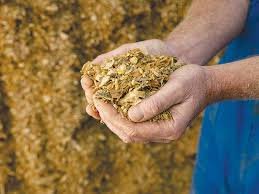
Overview
Maize silage provides a nutritious feed for beef and dairy animals, especially during feed shortages. Dairy farming is an important part of Pakistan’s agriculture, contributing to meat, milk, and rural livelihoods. This process starts with the selection of disease-resistant maize varieties that are suitable for local conditions. Harvest the crop at the right stage when kernels are rich in starch and have enough moisture for fermentation.
Chop the plant into small pieces and then pack it tightly into plastic-wrapped bales, bunkers, or silos to remove air. Once the process is complete, feed the silage daily, along with supplements, to provide cost-effective nutrition and solve fodder shortages for livestock.
In this article, we explain the step-by-step process of making high-quality maize silage. This guide helps farmers provide a continuous feed supply for dairy animals while optimizing their feed resources
Step 1: Selection of Crop
The first step in producing high-quality maize silage is the selection of the right crop. Choosing the proper maize variety ensures good nutritional content, high yield, and effective fermentation. In Pakistan, hybrid and dent-type maize varieties are widely preferred as they produce have high starch content and huge amounts of biomass, which increases the energy value of the silage.
Key factors to consider:
- Variety: Dent-type or Hybrid maize varieties are ideal as they produce more biomass and have higher starch content.
- Adaptability: The chosen variety should match climate conditions and local soil to ensure healthy growth.
- Disease resistance: Choosing disease-resistant varieties reduces crop loss and helps maintain consistent quality.
- Nutrient potential: Choose crops that offer a good balance of carbohydrates, Fiber, and moisture to produce high-quality silage.
Step 2: Determining the Harvesting Stage
The harvesting phase is a very critical step in producing high-quality maize. If the plant has enough moisture, it will produce high-energy silage; however, harvesting too late can result in dry, less fermentable material.
Guidelines:
- Avoid harvesting too early- As immature maize has lower starch content and may result in poor fermentation.
- Avoid harvesting too late- As dry plants are harder to chop, pack, and ferment.
- Add the whole plant—stalks, stems and, leaves for nutritional value and maximize biomass.
Step 3: Chopping the Maize
After harvesting, the maize plants should be chopped into small pieces to prepare them for fermentation and storage. Proper chopping is important to generate high quality silage.
Key points for chopping:
- Size of pieces: Chop the maize into 1–2 cm long uniform pieces.
- Equipment: Large-scale farms use heavy machinery such as choppers, while small-scale farmers do it manually.
- Complete plant usage: Use the entire plant—including stalks, leaves, and ears—to boost the silage’s nutrient content and energy value.
- Ease of feeding: It reduces wastage, improves digestion, supports animal health, and saves Labor costs.
Chopping process:
- Cut the maize into 1–2 cm long pieces.
- Use mechanical choppers for large-scale farms, or manual methods for smaller farms.
- Unifor sizes or properly chopped silage is easier for animals to consume and digest.
Step 4: Packing the Silage
Packing is a more critical step after chopping. Proper packing removes air from silage and creates an anaerobic environment that is important for successful fermentation. Without this step, nutrients will be lost.”
Packing tips:
- Use silos, bunkers, or plastic-wrapped bales for storage.
- Pack the material as tightly as possible to remove air.
- Make even layers
- Use plastic sheets to cover this packed maize silage
Step 5: Ensiling & Fermentation
When properly packed and sealed, the maize undergoes natural fermentation. Here:
- Lactic acid bacteria convert sugars into lactic acid.
- The pH drops, preserving the feed
- Takes 3–6 weeks, depends on temperature and moisture content.
Step 6: Storage
If maintained properly, then silage is stored for 12-18 months.
Storage tips
- Keep silage sealed in airtight containers, silos, or plastic-wrapped bales.
- Prevent exposure to sunlight, rain, or air
Step 7: Feeding and Uses
Maize silage is fed as a primary or supplementary feed; however, it depends on the livestock and their nutritional needs.
Feeding tips:
- Offer silage daily in controlled amounts
- Combine silage with protein-rich supplements, minerals, or concentrates for a balanced diet.
- Monitor animal intake and health.
Benefits of Maize Silage
- Year-round fodder supply.
- High energy and digestibility
- Efficient land use
- Cost-effective
- Improved animal health
Challenges and Considerations
Some challenges need attention:
- Initial investment.
- Technical know-how
- Moisture management.
- Supplementation

Muhammad Arif CEO, MBA in Finance and Marketing from South Korea University. 15 years plus experience in Agriculture Waste and Animal Feed Production, Facility Management & Export


